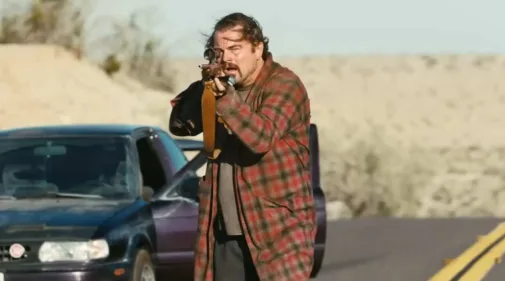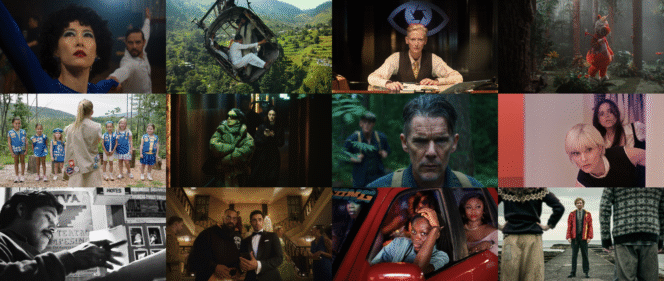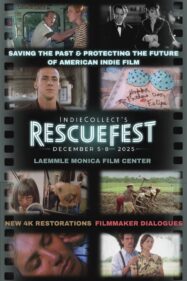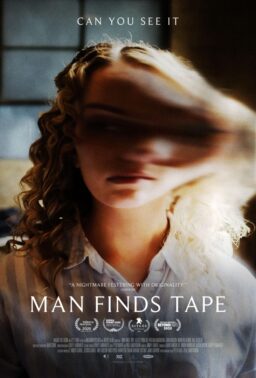The Sundance Film Festival has always been a notable
launching pad for major documentary films. Opening night of my first festival
included instant buzz for a little doc about back-up singers that had appeared
across the parking lot from the theater I had chosen that night. “20 Feet From
Stardom” would go on to win the Oscar. Last year, not only saw the world
premiere of Steve James’ remarkable “Life Itself” but another documentary that
got snubbed by the Academy, Jesse Moss’ brilliant “The Overnighters.” Too many
other obligations forced me to miss some of 2015’s major docs, including Kirby
Dick’s “The Hunting Ground” and Alex Gibney’s “Going Clear,” but I did see a
good number of them. The best of the bunch is “Dreamcatcher,” which I broke out
into a standalone piece, but here are my thoughts on a handful of the notable
other non-fiction films in the U.S. and World Documentary programs.
The best of the rest is Sophie Deraspe’s “The Amina Profile,” the true story of
Amina Arraf, otherwise known as the Gay Girl in Damascus. Her blog, chronicling
the life of an out lesbian in Syria, garnered attention worldwide. Women in the
Middle East rarely have an international voice, and Arraf became an important
online presence for thousands of people. She even started an online
relationship with a French-Canadian woman named Sandra. They never met, but
they wrote explicit messages to each other online and formed a personal
connection. Or at least Sandra thought they did. And so, when Amina went
missing, not long after garnering international attention for a blog post about
how the authorities turned up at her door to take her in and her father turned
them away, Sandra, and the rest of the online community she had reached, were
naturally concerned. They began investigating Amina’s disappearance, and
discovered something truly amazing about who she was in the first place.
Deraspe opens her film in a very unique manner for a
documentary, recreating the imaginary affair between Amina and Sandra in
hypersexualized images of women undressing under explicit texts between the
pair. She also cuts to shots of “Amina” walking through the street; we can’t
see her face and we don’t know where she’s going. The impact of these artistic
choices is essential to the success of the film overall in that they create an
air of mystery around Amina, which is countered by the blunt reality of the final
act, which includes a conversation between Sandra and “Amina” that’s one of the
best scenes at Sundance this year. I was lucky enough to see “The Amina Profile”
via screener before I left for Park City. Even though I’m home now, and have
seen dozens of films in between, it’s one of this year’s films that continues
to haunt me.

The breadth of diversity in subject matter and style at
Sundance 2015 couldn’t be better represented than the segue from “The Amina
Profile” to “Finders Keepers,” a doc
that could do for its subjects what “The King of Kong: A Fistful of Quarters”
did for the unforgettable characters within it. Shannon Whisnant sure is a
memorable character, one who saw his big break after he bought the contents of
a storage unit at auction. You see, Shannon always wanted to be a star. He always
knew he’d be a star. And when he
opened a grill from that storage unit auction and found a human leg in it, he
decided this, of all things, was his big break. He created “Foot Smoker BBQ
Grill” t-shirts and websites. He went on local TV and even tried to parlay his
minimal amount of fame into a reality TV series. Small problem: the biological
owner of the body part wanted it back.
“Finders Keepers” would be engaging enough if it were merely
about these two larger-than-life personalities, but what I like about it is how
distinctly directors Bryan Carberry and Clay Tweel make clear that this bizarre
drama forever impacted both players within it. The natural instinct for most
people will be to criticize Shannon for not giving back the leg but one starts
to feel pity for a man just looking for a little attention. And it’s undeniable
that if John Wood had been instantly given back his leg, his life may not have
been saved. Carberry and Tweel make the smart decision to never really mock
this pair—they’re larger-than-life but not cartoons, and it’s what we can see
of ourselves in this odd story that makes for a memorable film.

You’ll likely see little of yourself in the harrowing “Cartel Land,” a piece about a giant
swath of the continent that has basically become a lawless, vigilante state.
Matthew Heineman’s film tells two stories of men who have taken the law into
their own hands on opposite sides of the stunningly violent and dangerous world
of the Mexican cartels. In Michoacán, Dr. Jose Mireles has stepped in to do
what the law refuses to—stop the drug cartels. He rallies townspeople to
protect their own communities and starts his own organization of crimefighters.
Is he a hero? Is he a problem? The same questions could be asked about Tim
Foley, an Arizona-based man who essentially protects the border from illegal
immigrants and drug trafficking on his own.
Heineman takes a very you-are-there approach to documentary
filmmaking, taking us on night patrols with Foley and to raids with Mireles. He
doesn’t quite successfully draw the lines between the two men, leaving a film
that feels a bit shapeless at times, but it’s still a startling look into a
world where the traditional forces of crimefighting have become useless. What
do we do when the cops are corrupt or absent and we see horrible wrongs that
need correcting? “Cartel Land,” somewhat depressingly, makes a case that there’s
not much we can do.

Taking action in the face of wrongdoing is also a surprising
theme of Bobcat Goldthwait’s memorable “Call
Me Lucky,”a biographical doc with a twist about the legendary stand-up
Barry Crimmins. Once the godfather of Boston-based comedy, Crimmins never quite
got the reputation he deserved or the level of fame commensurate with his
talents. Acerbic and witty, Crimmins railed against the Reagan administration
and the Catholic Church, before revealing something incredibly personal about
his past, and becoming a fighter for justice to stop abuse from happening in
the future.
Goldthwait, himself a friend and sort of a protégé of Crimmins,
has gathered an impressive array of people to talk about a man who sometimes
feels like an early version of Bill Hicks or Jon Stewart. Interviews with Kevin
Meaney, Lenny Clarke, Marc Maron, and many others take up the majority of the
first half of “Call Me Lucky,” in which we learn Crimmins’ importance to the
comedy scene. The second half is a very different film, after the revelation
about Crimmins’ dark past and the documentation of his fight for justice. He’s
a fascinating, a great subject for a doc, and Goldthwait adds another piece of
evidence to the case that sometimes our wittiest, most cynical comedians are
angry for a reason—they’re using comedy to raise consciousness. The film is a
bit too worshipful of its subject (I’m not saying anything is necessarily wrong with Crimmins but a more
well-rounded approach might have helped) and relies on talking-head interviews
a bit too much when I would have liked to just see more of Crimmins’ material.
He’s certainly unforgettable.
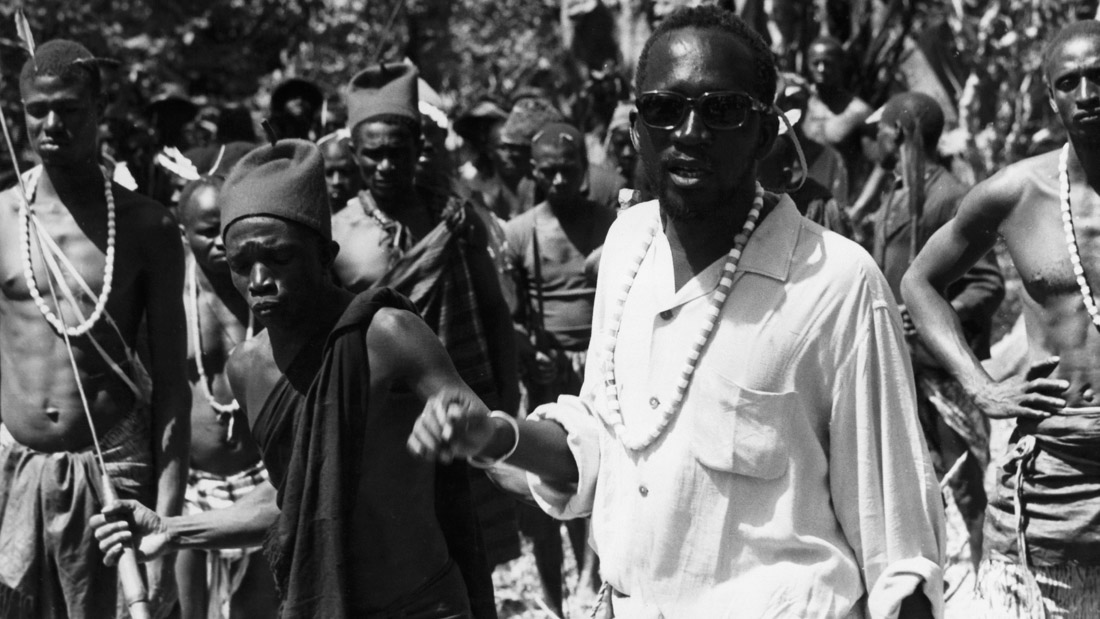
I’ll never forget sitting at the Landmark Century Theatre
for the Chicago International Film Festival premiere of Ousmane Sembene’s “Moolaade,”
one of the best films of the ‘00s. It is a powerful, searing indictment of
female genital mutilation in Africa. Sadly, to this day, I would say I still
don’t know quite enough about its legendary, influential director, but “Sembene!”certainly helped. As Sembene’s
biographer states, “Sembene began writing
so he could give a voice to the voiceless.” It’s impossible to speak about
African cinema at length and not mention the influence of Ousmane Sembene. He
not only brought important social issues to the international conversation, he
was a remarkably accomplished filmmaker, which one can see in just the scenes
within the documentary about him.
“Sembene!” is a bit too austere and sterile. We spend a bit
too much time with Sembene’s biographer for my taste when we should be focused
entirely on the filmmaker. I think Sembene may be a hard man to capture on film.
He wasn’t exactly open to discussion or easy to define. His films spoke for
him. And they spoke for millions. If “Sembene!” gets that filmography to a
larger number of people, it will have done notable good.

Finally, there’s the fun but thin “Drunk Stoned Brilliant Dead: The Story of the National Lampoon,”
which focuses solely on the rise of the magazine and movie empire that would go
on to inspire hundreds of comedians and filmmakers within its wake. Without
National Lampoon, there’s no “Saturday Night Live” and there’s no “Animal House”.
Right there, you have as influential a comedy force as any in the last
half-century. But we knew that. Maybe younger viewers who didn’t grow up with
National Lampoon will be more educated by the doc, but I kept wanting it to dig
a little deeper, find out exactly how this brand of comedy came to be and why
it dissipated so completely in the ‘90s and beyond with straight-to-video
sequels that tarnished the brand (which is completely ignored here). “Drunk
Stoned Brilliant Dead” is never less than entertaining, especially when it’s
playing old radio bits from the National Lampoon show that are still
hysterical, but it’s also not quite more than that either.


